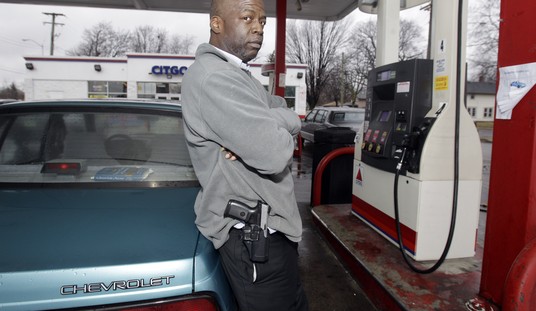SOCOM has seen the light, and is finally looking to drop the 7.62 NATO in favor of a lighter and better-performing rifle in a 6.5 short-action caliber.
Special Operations Command is exploring a new caliber for its semi-automatic sniper rifle needs and upgrading one of its bolt-action sniper rifle systems.
Maj. Aron Hauquitz told Military Times Tuesday that SOCOM is in the preliminary stages of exploring a sniper rifle chambered in the 6.5 mm caliber. The two commercially available rounds being evaluated are the .260 Remington and the 6.5 mm Creedmoor.
Research shows that both rounds will “stay supersonic longer, have less wind drift and better terminal performance than 7.62 mm ammunition,” SOCOM officials said.
Hauquitz said that the research is focused on the popularity and availability of the cartridge, and finding out the benefits and drawbacks of the different rounds.
At the same time, SOCOM is working to develop polymer ammunition in 6.5 mm to reduce the load for operators, Hauquitz said. Research is showing a one-third weight reduction for 7.62 mm ammunition, allowing the 6.5 mm to come in at 5.56 mm weight ranges.
Is anyone seeing signs of a clear trend here?
The Army is already looking to bring back battle rifles and widely distribute them among the troops, at the same time they’re replacing their semi-automatic sniper rifles with a HK descendent of the AR-10 that isn’t really a sniper rifle.

After more than half a century of service, the Army seems to be losing faith in the 5.56 NATO round as a viable caliber for the long term. They’re looking at rounds such as the .260 Remington and 6.5 Creedmoor in an AR-10 sized battle rifle, and the Army Marksmanship Unit has been running an “AR-12,” (a AR-type rifle between the AR-15 and AR-10 in size) in the experimental .264 USA.
While it’s far too soon to guess at what this means for the long term, the three very similar stories strong suggests that the U.S. military is looking to transition away from the 5.56 NATO and 7.62 NATO cartridges to a single polymer-cased round in the 6.5mm family that will weigh no more than the 5.56 NATO, but will out perform it at short range, and the 7.62 NATO at longer ranges.
I like the idea of the military moving towards a cartridge with at least an 800 meter range so that our soldiers aren’t being badly outgunned by foes equipped with 7.62x54R rifles and machine guns that have roughly 300 meters more of an effective range than our 5.56 rounds. In a perfect world, I’d love for our troops to b able to field a 7-9 pound rifle capable of engaging enemy soldiers at 1,000 meters and area targets at long ranges than that, but I don’t think equipping our troops with a sub-MOA rifle with a 1,000 meter range is going to make a bit of difference unless we radically reshape marksmanship training in the Army.
I’ve training Iraq War and Afghan War veterans when I was an instructor at Project Appleseed‘s home range. The Marines we had (typically from Camp Lejeune) were typically squared away and could pick up our slung rifle marksmanship techniques pretty quickly, because Marine culture emphasizes individual marksmanship. Our Army guys (typically from Fort Bragg) fell into one of two camps. Special Forces guys tended to be very competent and mastered what we had to offer very quickly, and shot “Rifleman” (expert) during their first Appleseed weekend.
“Regular Army” guys and National Guardsmen tended to be pretty cocky until the shooting started.
They quickly learned that shooting at a target one-inch square at 25 yards can be very humbling if you haven’t mastered the fundamentals of shooting, and quite frankly, the Army simply does teach that, and hasn’t in a very long time.
I think that equipping SOCOM unit with accurized rifles and extended-range 6.5mm cartridges make sense, as these troops have the training (or can get the training) to actually use these longer-range cartridges to good effect.
I’m not so sure that equipping soldiers with a rifle capable of 1,000 meter hits when the soldiers themselves don’t have the skills to make consistent hits at 300 meters makes a lot of sense. If the U.S. military is interested in equipping our soldiers with longer-range weapons, they greatly need to increase the training budget and quality of training for our troops.
I don’t care how good a weapon system is, if it’s put in the hands of someone who lacks the skill to use it, it’s a waste of money.








Join the conversation as a VIP Member